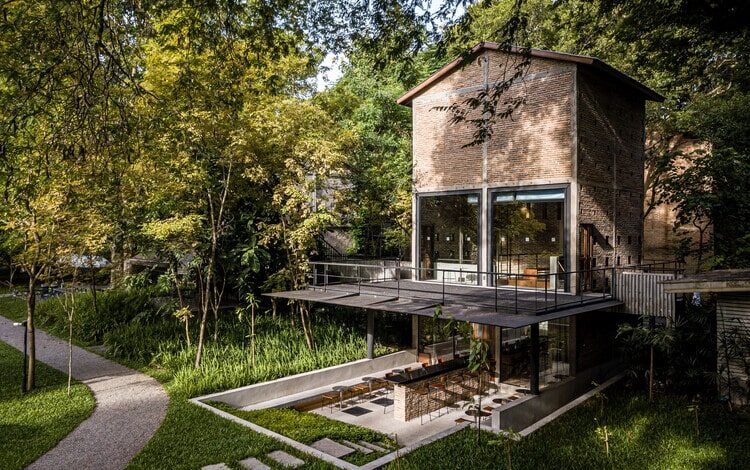The Future of Architecture: Creating Purposeful and Sustainable Spaces

Architecture is not merely the construction of buildings—it’s the manifestation of human vision, purpose, and innovation. It connects art with engineering, emotion with function, and the present with the future. In a world increasingly shaped by technology, climate change, and social evolution, architecture must respond not only with creativity but also with responsibility.
This article explores how architecture is evolving to meet modern needs. It looks at how designers use new technologies, materials, and strategies to address the challenges of our time. We’ll also examine how spaces affect human behavior, sustainability, and cultural expression—all while remaining rooted in the timeless purpose of serving people.
The Role of Architecture in Everyday Life
Whether you are walking through a quiet home, a crowded marketplace, or a grand concert hall, the built environment silently influences your thoughts and behaviors. Architecture is a constant, often unnoticed companion. It shapes how we move, where we gather, how we interact, and even how we feel.
The primary goal of architecture is to serve a functional purpose. However, great architecture goes beyond functionality—it enriches the human experience. It allows people to feel safe, inspired, calm, focused, or connected. In this sense, architecture becomes a psychological tool, capable of enhancing well-being and social interaction.
Designing with Purpose
One of the most important shifts in architecture today is a move toward intentionality. Design is no longer just about aesthetics or economic value; it’s about solving real-world problems. Architects must now consider a wide array of issues, such as:
- Climate resilience
- Accessibility and inclusion
- Public health
- Digital integration
- Energy efficiency
- Flexibility and adaptability
These considerations require a multidisciplinary approach, involving not just architects, but engineers, environmental scientists, psychologists, and data analysts. Every structure must be evaluated in terms of how it affects both the individual user and the larger ecosystem.
Key Principles of Contemporary Design
Although architectural styles and technologies change over time, the core principles that define successful design remain constant:
1. Functionality
Every space must be practical for its intended use. Whether a building is designed for living, working, healing, or learning, it must be intuitive and efficient.
2. Aesthetics
Visual appeal matters—not as decoration, but as a form of expression. A beautiful environment enhances mood and reflects cultural values.
3. Sustainability
Design must be environmentally responsible, using resources wisely and reducing its carbon footprint.
4. Context
Buildings should harmonize with their environment, complementing the natural and built surroundings.
5. Longevity
Durability ensures that a structure remains functional and relevant for decades or even centuries.
The Human Experience in Architectural Designs
One of the most exciting developments in the field is the growing emphasis on user experience. Architects are now using neuroscience and behavioral research to inform how spaces should look and feel. Elements like natural light, sound absorption, air quality, and spatial flow all play a role in how people react within a space.
This human-centered approach transforms architecture from a static structure into a dynamic experience. In office design, for example, studies show that access to daylight, greenery, and quiet areas increases employee satisfaction and productivity. In healthcare facilities, thoughtful design can accelerate patient recovery and reduce stress.
By focusing on how people live and work, modern architectural designs in Robeson County NC aim to improve quality of life—not just deliver technical perfection.
The Impact of Technology on Design and Construction
Technology has revolutionized the architectural process, from the first sketch to the final nail. Digital tools now allow architects to visualize, test, and adapt their ideas in real time.
Key innovations include:
- Building Information Modeling (BIM): Enables collaboration across disciplines and allows for precise 3D modeling.
- Virtual and Augmented Reality: Provides immersive walkthroughs of unbuilt spaces.
- Parametric Design: Uses algorithms to generate complex forms that adapt to environmental and structural inputs.
- 3D Printing: Offers fast prototyping and, in some cases, full-scale structural components.
- Smart Materials: Includes innovations like self-healing concrete and energy-generating glass.
These tools are not just about aesthetics or efficiency—they enhance creativity, reduce waste, and help architects respond to modern challenges more effectively.
Sustainability as a Core Responsibility
Today, sustainability is more than a buzzword; it’s a critical component of design. The built environment is responsible for a significant portion of global energy use and greenhouse gas emissions. In response, architects are embracing low-impact materials, passive design strategies, and renewable energy integration.
Some common sustainability strategies include:
- Green roofs and walls: Help manage stormwater, reduce heat islands, and support biodiversity.
- Natural ventilation: Reduces dependence on air conditioning and improves air quality.
- Solar orientation: Minimizes energy consumption by maximizing daylight and shading appropriately.
- Water harvesting and recycling: Cuts down on freshwater use and supports environmental health.
By embedding these features into architectural designs, architects not only protect the planet but also create healthier environments for people.
The Social Dimension of Architecture
Architecture doesn’t exist in isolation. Every building is part of a broader social fabric, and every design choice has ethical implications. Architects are increasingly taking responsibility for the role their work plays in shaping society.
Public spaces, for example, can foster community and equality—or alienation and exclusion. The layout of schools can either encourage creativity or inhibit it. The design of affordable housing can promote dignity or reinforce stigma.
In this context, architectural designs serve as instruments of social change. By prioritizing inclusivity, accessibility, and user voice, designers can contribute to more just and equitable societies.
The Rise of Modular and Adaptive Architecture
One of the major trends shaping the future is flexibility. In an unpredictable world, buildings must be able to adapt to new uses, technologies, and user needs.
Modular architecture, which involves assembling buildings from prefabricated units, allows for faster construction, easier maintenance, and scalable design. It’s especially useful in emergency housing, education, and healthcare.
Adaptive reuse is another growing practice. Instead of demolishing old buildings, architects reimagine them for new purposes—turning warehouses into lofts or factories into innovation hubs. This not only preserves history but reduces waste and cost.
The future of architecture is circular: what was once considered obsolete can become new again through thoughtful, adaptive design.
Education and the Future Architect
As the demands of the profession change, so too must architectural education. Today’s students are being trained not only in drawing and structural analysis but in ethics, sustainability, user experience, and interdisciplinary collaboration.
Workshops, design-build projects, international exchanges, and digital fluency are now essential components of a modern architectural curriculum. The goal is to create architects who are not only technically proficient but also socially and environmentally conscious.
Looking Ahead: What Will Define Tomorrow’s Architecture?
The buildings of tomorrow will be more than static shelters. They will be interactive, data-informed, and deeply personal. They may change shape depending on the weather, communicate with their inhabitants, and produce more energy than they consume.
But beyond technology, the heart of architecture will remain the same: creating meaningful spaces that support human life in all its complexity.
In the coming decades, we will see more collaborations between artists, scientists, engineers, and communities. Together, they will produce architectural designs in Robeson County NC that not only respond to global challenges but also uplift the human spirit.
Conclusion
Architecture is a constantly evolving discipline. It absorbs advances in technology, shifts in cultural values, and the growing urgency of sustainability. At its best, it is a force for good—a way to improve lives, connect communities, and protect the planet.
By focusing on people, context, and long-term impact, today’s architects are redefining what it means to build. Through thoughtful innovation and ethical responsibility, architectural designs are not just shaping skylines—they’re shaping the future.




